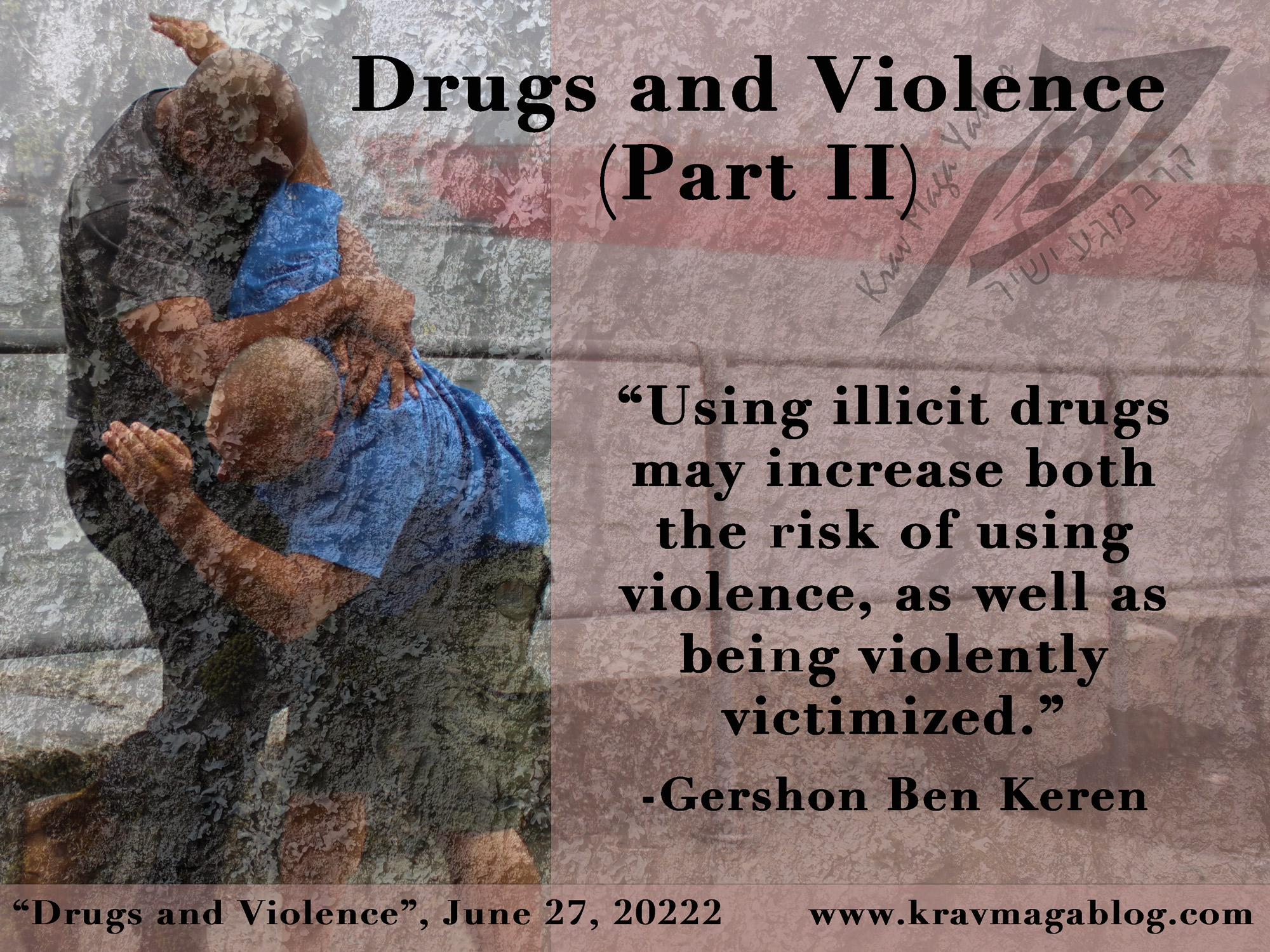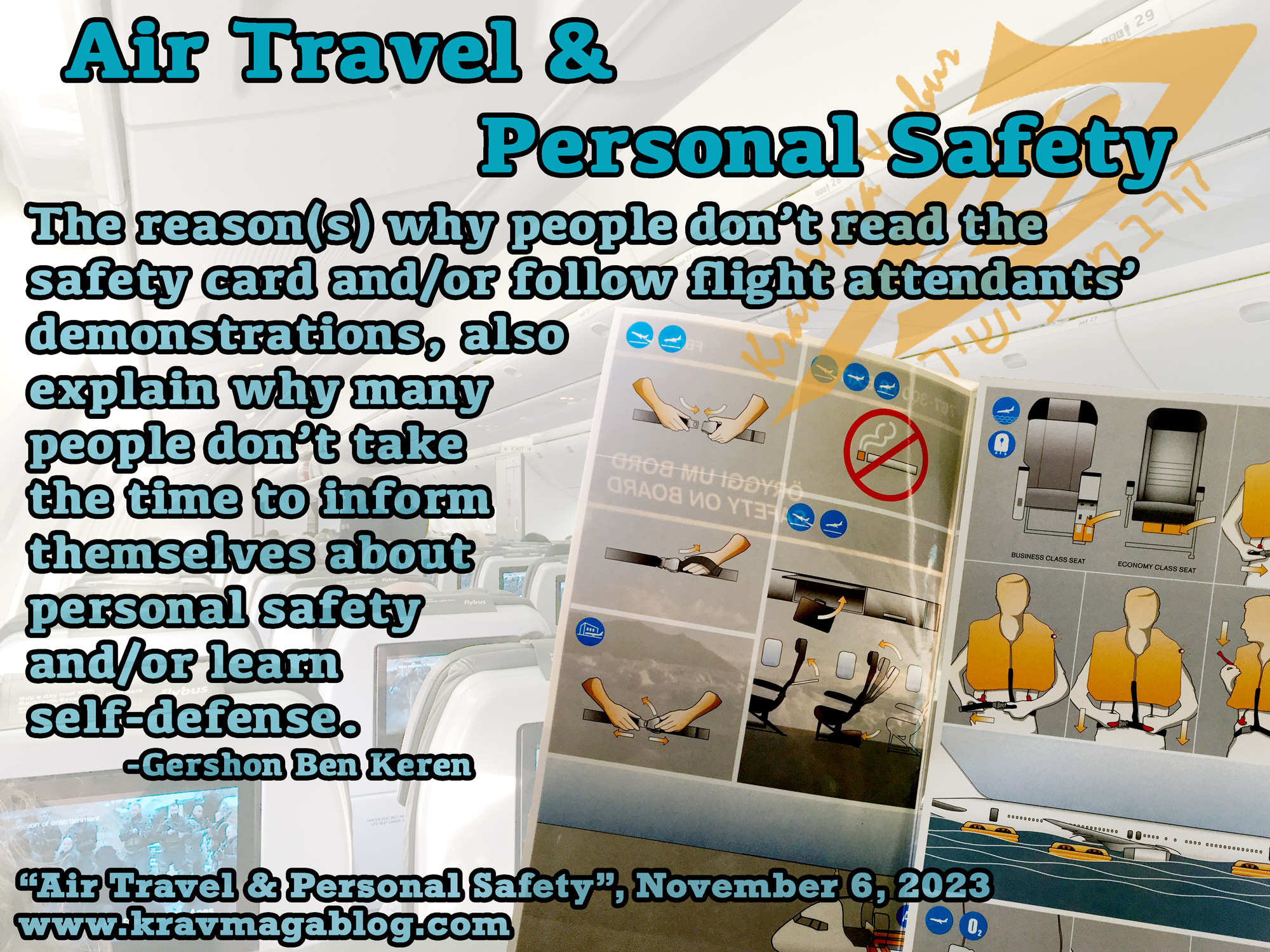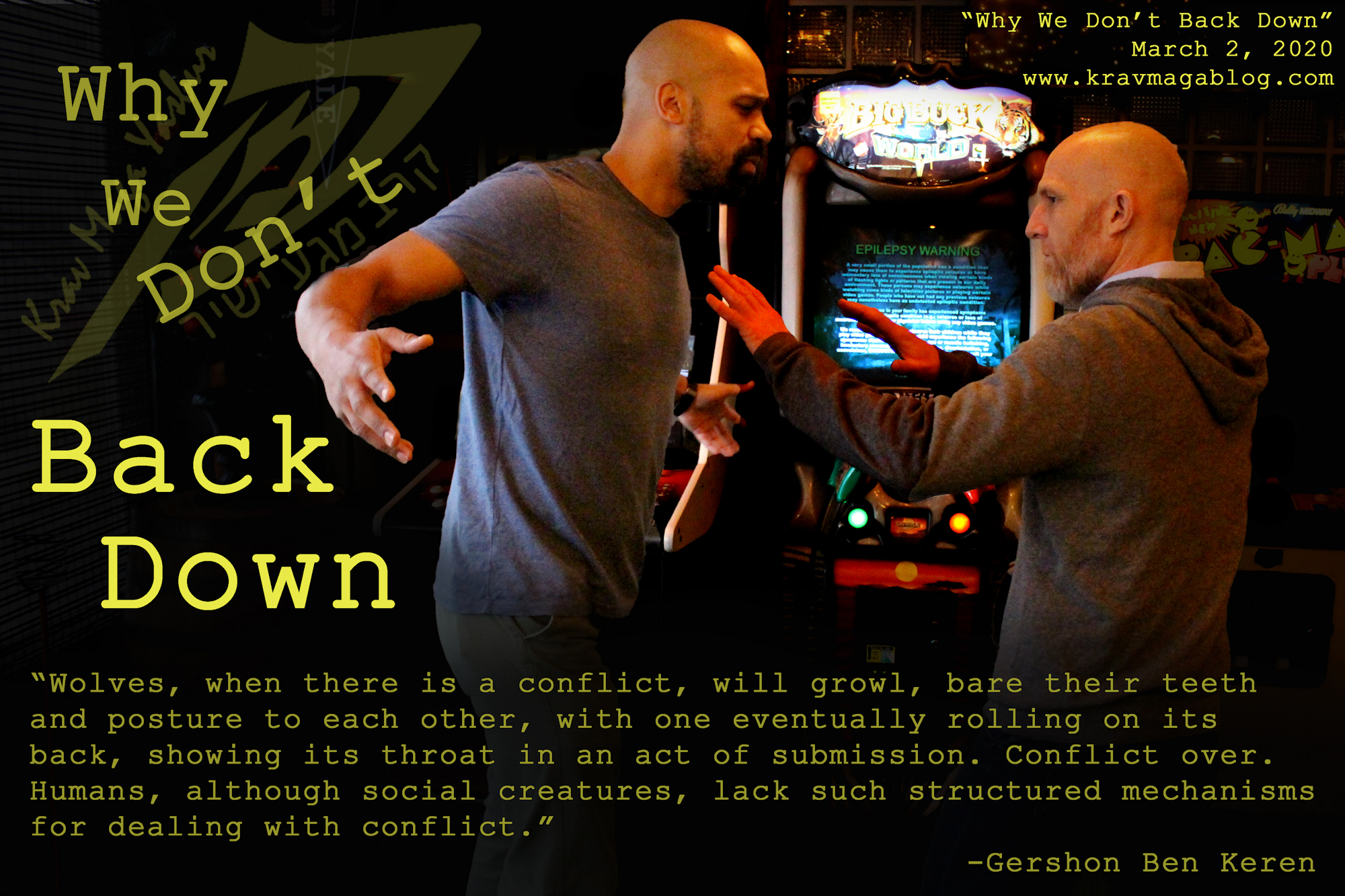Why We Don't Back Down, is an article written by Gershon Ben Keren, a 5th Degree Black Belt in Krav Maga, who teaches Krav Maga in Boston, MA. He has also authored three Amazon best-Selling Books on Krav Maga.
During my time working bar and club security, I have seen countless fights that involved two individuals who clearly didn’t want to fight. You could see the reluctance of both parties as they unconvincingly postured to each other, hoping that the other would back down – I rack my brains to think of one incident when somebody did. In this article, I want to look at some of the reasons why we don’t back down in verbal altercations that are clearly going to result in a physical confrontation; and it’s not simply a matter of ego (and in a bar/pub setting; alcohol). The types of incidents/interactions I want to consider are spontaneously violent situations – often referred to as “social” violence – where somebody’s actions and behaviors, whether real or perceived, has triggered another person(s) to become aggressive/potentially violent towards them e.g. they spilt a drink over them, they accidentally bumped into them, they were talking to their partner in a seemingly flirtatious manner, etc. Situations, where there is the opportunity for a non-physical, non-violent outcome.
Wolves and other social animals rarely fight, they manage disputes and conflicts through displays of posture and submission. Fighting rarely comes without some form of cost/injury, and for pack animals who hunt together, having injured members could be disastrous for the group’s survival, so actual fighting must be avoided at all costs. Wolves, when there is a conflict, will growl, bare their teeth and posture to each other, with one eventually rolling on its back, showing its throat in an act of submission. Conflict over. Humans, although social creatures, lack such structured mechanisms for dealing with conflict. Konrad Lorenz (1974), speculates that the reason for this, is that in our evolutionary history, when such behavioral systems that dealt with conflict were starting to be laid down, we were not sophisticated tool makers, and so unlike wolves we lacked the physical means to cause each other serious harm e.g. a wolf is easily capable of killing another wolf, by ripping its throat out, so it makes sense that a method of conflict resolution develops to avoid the potential of this happening. Humans on the other hand, without a tool such as a knife, stick or gun, etc., aren’t as physically dangerous to each other, and so didn’t develop a system for avoiding physical conflicts i.e. we don’t have a natural mechanism for backing down. This can be clearly seen in the posturing displays that often occur before the “real” fight, where there’s a lot of pushing, shouting, taking tops off, etc., where the frustration can be seen in the participants, that none of these actions are causing the other to back off. If we are to be successful in de-escalating conflicts, we need to be aware that there is not a natural “submissive” response that we can work to or with.
In many verbal disputes and arguments, neither party believes it will ever get physically violent i.e. that neither one will actually cross that line and throw the first punch. Each one, believes that their posturing will cause the other person to back down, however without an inherent/developed submissive response, this is highly unlikely, and at some point, frustrated by the fact that the other party is backing off, someone will throw a punch and the fight “proper” will be on; even though from a legal perspective it started the moment one person gave the other a reason to fear for their safety, and put themselves in a position where they could cause them physical harm i.e. assaulted them. Many people can’t conceive that in an aggressive verbal confrontation somebody would punch them, however without offering some alternative to engaging in violence, it is very likely that this will be the outcome i.e. the other person sees no other way out, etc. This form of denial is an inherent human coping mechanism, that allows us not to have to deal with the stress and negative/uncomfortable emotion(s) that are present in such conflicts. In many cases, we’ll write alternative narratives and outcomes, that mean we don’t have to accept the reality of what we’re facing e.g. we might tell ourselves that somebody will soon intervene and break up the confrontation for us (we just need to stall for time by continuing to engage in the pushing/shoving contest), or that the other person isn’t really serious and is just playing around with us, etc. When somebody starts to act aggressively towards you, if you’re unable to help them find a different direction to head in, there’s a good chance things will become physically violent.
De-escalating a situation involves a lot more than simply speaking softly and saying you’re sorry. In certain situations, apologizing will convince and reinforce to your aggressor that they are in the right, and justified to act violently towards you. To avoid a verbal altercation turning physical, we must recognize that people aren’t equipped with the necessary wiring to back down and may not be able to recognize when we are the ones “backing down”. Most of us can probably remember a time, when we presented a solution during a dispute that gave the individual we were arguing with what they wanted, but they were so emotional that they weren’t able to recognize it. Humans are great at posturing, demanding and forcing their case, but lack the wiring to always recognize the alternative ways of resolving the conflict, that are presented to them, and this is why de-escalation must be an interactive process, that sees the other party present the non-violent solution to the situation.
0 COMMENTS















